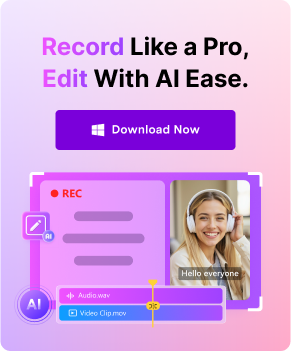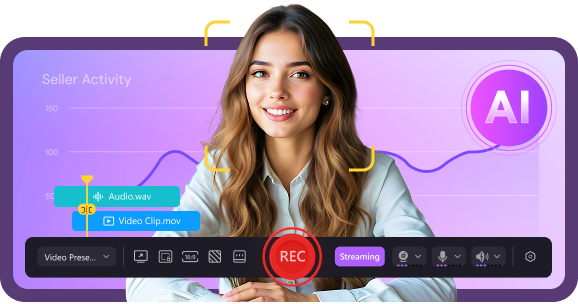Digital technology has changed how we learn. It lets us reach beyond traditional limits. The power of engaging tutorial videos is key. This guide will show you the top video tutorial tips and tricks. You'll learn how to clearly deliver your message. Your viewers will be hooked and leave feeling smarter.
When it comes to how to make tutorial videos, every detail is vital. We'll talk about tools and methods to make your videos stand out. From writing a script to final edits, each step is crucial. Let's explore how to make tutorials that grab and hold attention, teaching effectively.
Key Takeaways
- Learn crucial strategies to make tutorial videos more engaging.
- Understand the importance of high-quality audio and visuals in tutorials.
- Discover scripting techniques that clarify and captivate.
- Explore editing tips to polish and refine your video content.
- Recognize the role of viewer engagement for effective learning outcomes.
In this article
- Choosing the Right Tools and Software for Video Creation
- Scripting Your Tutorial for Maximum Clarity
- Recording High-Quality Audio and Video
- Integrating Visual Effects and Annotations for Emphasis
- Editing Like a Pro: Cutting, Cropping, and Merging
- Top Tips for Making Your Tutorial Engaging and Shareable
- Utilizing AI for Efficiency in Recording and Editing——DemoCreator
Part 1: Fundamentals of Crafting Tutorial Video Content

Starting your tutorial video project begins with a firm grasp of essential strategies. These include identifying who your video is for, what you aim to teach, and how to tell your story.
Identifying the Target Audience for Your Tutorial
Choosing the right audience is key. It decides the tutorial’s language and how deep to go into details. Knowing who your viewers are and what they need will make your video more effective.
Setting Clear Objectives and Learning Outcomes
Setting your video’s learning goals early is critical. These goals guide what you teach and how you engage with viewers. By knowing what your audience should learn, you can make content that meets these targets.
Establishing a Compelling Narrative Structure
Your tutorial isn’t just about sharing facts; it’s storytelling. Weave your lessons into an engaging story. This makes the learning stick through relatable stories and solving problems.
| Component | Description | Impact on Learner Engagement |
| Audience Identification | Understanding demographic, needs, and preference | Ensures content relevance and appeal |
| Learning Objectives | Clearly defined goals for the tutorial outcome | Directs content creation, ensures goal alignment |
| Narrative Structure | Logical flow and storytelling elements within the tutorial | Boosts engagement, aids memory retention |
Part 2: Choosing the Right Tools and Software for Video Creation
Starting to make tutorial videos means you need the best video creation tools. Your choice affects video quality and how easy it is to make them. It's key to pick tools that fit your project needs, whether you need software for tutorial videos or strong screen recording software.
Today, you can find many software options for all parts of video making, including editing and recording. Take Wondershare DemoCreator, for example. It makes recording and editing much simpler. Even beginners can use its friendly interface to make videos like the pros.
So, what should you look for in video creation software? Here's a quick guide:
- Ease of use: The software should be easy to understand and use right away.
- Versatility: You want software that can handle different types of recordings, like screen or webcam.
- Editing features: Good editing tools are vital. AI-enhanced features are a big plus.
- Output quality: You need options for high-resolution videos to keep things looking sharp.
If you're making tutorial videos, finding software that does it all makes things easier and less scary. This helps you be more efficient.
The best screen recording software and video editing tools do more than just help make videos. They also make your videos more engaging and informative. This ensures your educational content impacts viewers and stays memorable.
Part 3: Scripting Your Tutorial for Maximum Clarity
Writing a clear tutorial begins with a strong script. It's important to keep things simple and direct so everyone can understand. Using scripts that grab the viewer’s attention helps make learning fun.
Best Practices for Writing Engaging Scripts
When writing your script, use clear, everyday language and keep it friendly. This makes your content relatable and easy to grasp. Important elements include:
- An introduction that outlines what the viewer will learn and why it matters.
- Body sections that are organized logically, each presenting a main idea followed by details or examples.
- A conclusion that summarizes the key points and encourages further exploration or practice.
Using Storyboards to Pre-visualize Your Video
Storyboarding is a key step in making a tutorial. It helps map out your video, making sure each part connects well with your script. With storyboards, you focus on the most important visuals, which helps keep your story clear.
Employing the AI Teleprompter for Smooth Delivery
An AI teleprompter can make delivering your tutorial way smoother. It keeps you on track, making sure you don't miss anything important. This tool shows your script in an easy-to-read way, helping you present confidently.
| Feature | Benefits |
| AI Teleprompter | Ensures consistent pace and delivery; reduces the need for memorizing scripts. |
| Video Storyboards | Helps in visualizing the sequence of your tutorial, aligning visuals with verbal content for maximum impact. |
| Engaging Scripts | Increases viewer engagement by addressing specific interests and making the learning process enjoyable. |
Part 4: Recording High-Quality Audio and Video

When making tutorial videos, great recording quality is key. Good audio and clear video make learning better. Here are tips to make your videos look and sound pro.
Essential Tips for Capturing Crisp Audio
For clear audio, use noise reduction and AI speech enhancement. These tools lessen background noise and make voices clearer. This makes tutorials more engaging and easier to understand.
Making the Most of Your Camera and Lighting Setup
Good camera and lighting are crucial for great videos. Arrange lighting to avoid shadows and glare, improving visual quality. Use a high-definition camera for sharp, appealing footage.
Virtual Backgrounds and Avatars to Enhance Presentation
Virtual backgrounds keep your look professional when you can't use a real setting. Using avatars instead of showing yourself can be unique and protect your privacy.
To best use virtual backgrounds, remember:
- Choose simple backgrounds to keep focus.
- Have enough lighting to blend with the virtual background well.
- Check if your virtual background works with your recording software.
| Feature | Benefits |
| AI Speech Enhancer | Improves voice clarity and intelligibility |
| Noise Reduction Technology | Reduces background noise for cleaner audio capture |
| HD Camera with Proper Lighting | Ensures crisp, clear video with professional look |
| Virtual Background & Avatars | Enhances visual appeal, offers privacy and branding opportunities |
Part 5: Integrating Visual Effects and Annotations for Emphasis
Adding visual effects and video annotations to your tutorial videos grabs attention and boosts learning. Key points stand out visually, which helps viewers understand and remember them better.
Highlighting Key Points with Annotations
Video annotations are essential in educational videos. They use text labels, highlights, and arrows to point out key information. This makes complex details simpler to understand.
Pan and Zoom Features to Maintain Viewer Engagement
The pan and zoom feature keeps viewers interested. It zooms in on details or out to show the bigger picture. This keeps the video engaging and fun to watch.
Adding Transitions and Animated Subtitles for Impact
Transitions and animated subtitles make tutorial videos look professional. Smooth transitions keep the information flow uninterrupted. Animated subtitles help viewers understand the spoken content better.
| Feature | Benefits | pplication in Tutorials |
| Video Annotations | Direct viewer's focus, highlight important information | Add labels to diagrams, use arrows to show connections |
| Pan and Zoom | Enhance engagement, focus on details | Zoom into fine details of a process, pan across to show scale |
| Animated Subtitles | Reinforce verbal content, aid comprehension | Use to emphasize key terms, animate for emphasis on timings |
Part 6: Editing Like a Pro: Cutting, Cropping, and Merging

Learning professional video editing can really make a simple video stand out. It turns it into a great educational tool. We will look at some key editing steps that boost your tutorial's impact and keep viewers glued.
Refining Your Tutorial with Advanced Editing Techniques
Advanced editing skills are key to making your videos look top-notch. Things like tweaking color balance and making the sound clearer help a lot. These skills make your videos not just more fun to watch, but also easier to get.
How to Effortlessly Manage Multiple Tracks
Dealing with many tracks in video editing can be tricky. But managing them well makes your tutorial smooth and unified. Good editing software makes it simple to handle many layers. This lets you switch shots easily while keeping your story on track.
Utilizing Templates for a Cohesive Look
Using video templates is a huge help in keeping a uniform style. Templates can quicken your video-making and keep your look consistent. Choosing the right templates can really make your videos stand out. It draws in viewers and leaves a lasting impression.
Part 7: Top Tips for Making Your Tutorial Engaging and Shareable
Making engaging tutorials starts with new tech and strategies for involving people. We'll look at benefits of AI-enhanced content, social sharing strategies, and collaborative video editing. These can make your tutorials more engaging and widely shared.
Leveraging AI Features to Boost Content Quality
Using AI can make tutorial content much better and appealing. With AI, you can enhance videos in real-time and optimize voice automatically. This makes videos look professional and easier to understand. More people can follow and learn from AI-enhanced content.
Strategies for Encouraging Social Shares
For your tutorials to reach more people, you need good social sharing strategies. Having a simple way for viewers to share to platforms like YouTube, Facebook, and Twitter is key. Adding features that encourage sharing before or after watching can greatly increase how many people see and engage with your content.
Collaborative Features for Team Projects
Collaborative video editing tools let teams work together easily, no matter where they are. These tools make creating videos faster and better. They allow for different ideas and instant feedback during the process.
| Feature | Benefits | Platform Example |
| AI Video Enhancement | Improves video quality, enhances clarity | Adobe Premiere Pro |
| Social Share Integration | Facilitates easy sharing, increases reach | Vimeo |
| Collaborative Editing Tools | Enables team collaboration, enhances productivity | WeVideo |
Part 8: Utilizing AI for Efficiency in Recording and Editing——DemoCreator

The advent of AI has revolutionized video production, and Wondershare DemoCreator takes full advantage of these advancements. With DemoCreator’s AI-powered tools, creating, editing, and sharing content is now smoother and more efficient. This means you can produce high-quality videos while saving significant time during editing.
DemoCreator simplifies the video production process by automating tasks that used to be time-consuming. For example, AI handles precise settings, such as adjusting the camera angle or ensuring clear sound, reducing the workload at the start of your video project.
In post-production, DemoCreator’s AI features make editing easier than ever. Here’s how:
- Automated Video Tagging: DemoCreator uses AI to review footage and tag key scenes. This allows you to locate the clips you need quickly, speeding up your workflow.
- AI-Powered Speech Recognition: Turn spoken words into text automatically. DemoCreator makes adding subtitles effortless, enhancing accessibility and engagement.
- Scene Detection: With AI, DemoCreator can identify and separate different scenes in a video, making transitions and cuts seamless and professional.
AI in DemoCreator ensures your editing process is not only efficient but also professional, allowing you to focus on creativity. As AI technology continues to evolve, DemoCreator will keep empowering creators with tools that boost productivity and creativity in video production.
Conclusion
In concluding our journey on making tutorial videos, we see how mixing great stories with new tech defines the future. Starting by knowing who your audience is leads to content that really speaks to them and keeps them interested. Setting goals and clear outcomes are key for successful tutorials.
Making a top-notch video involves always aiming for the best in engagement. Choosing the right software, writing a captivating story, or using AI to improve recording and editing are crucial. These steps make your tutorials stand out. Adding interactive parts and visual effects keeps learners interested and eager.
In summary, creating impactful tutorials depends on mixing creativity with smart analysis. Using advanced features like annotations or virtual avatars boosts the learning experience. It makes lessons not just informative, but immersive. Follow these tips for a tutorial project that not only educates but also engages deeply.
FAQs
-
How can I make engaging tutorial videos that capture my audience's attention?
Focus on a well-scripted presentation that's easy to understand. Use quality audio and visuals. Incorporate storytelling to keep viewers hooked. Ensure your tutorial is easy to follow and boosts learning.
-
What are the important elements of crafting effective tutorial video content?
Identify your target audience and set clear learning goals. Build a compelling story for your tutorial. These steps ensure your content meets your audience's needs.
-
What tools and software should I use for creating tutorial videos?
Use tools like Wondershare DemoCreator for making tutorials. Features should include screen and game capture, and webcam recording. AI can boost video quality, making your work look professional.
-
How should I script my tutorial video for clarity and engagement?
Write a script that addresses viewer concerns in simple language. Use storyboarding and an AI teleprompter for delivery. This keeps your video clear and engaging.
-
What are the key techniques for recording high-quality audio and video?
For great audio, use noise reduction and AI speech tools. Ensure professional video quality with the right equipment. Use virtual backgrounds to enhance your setting.



